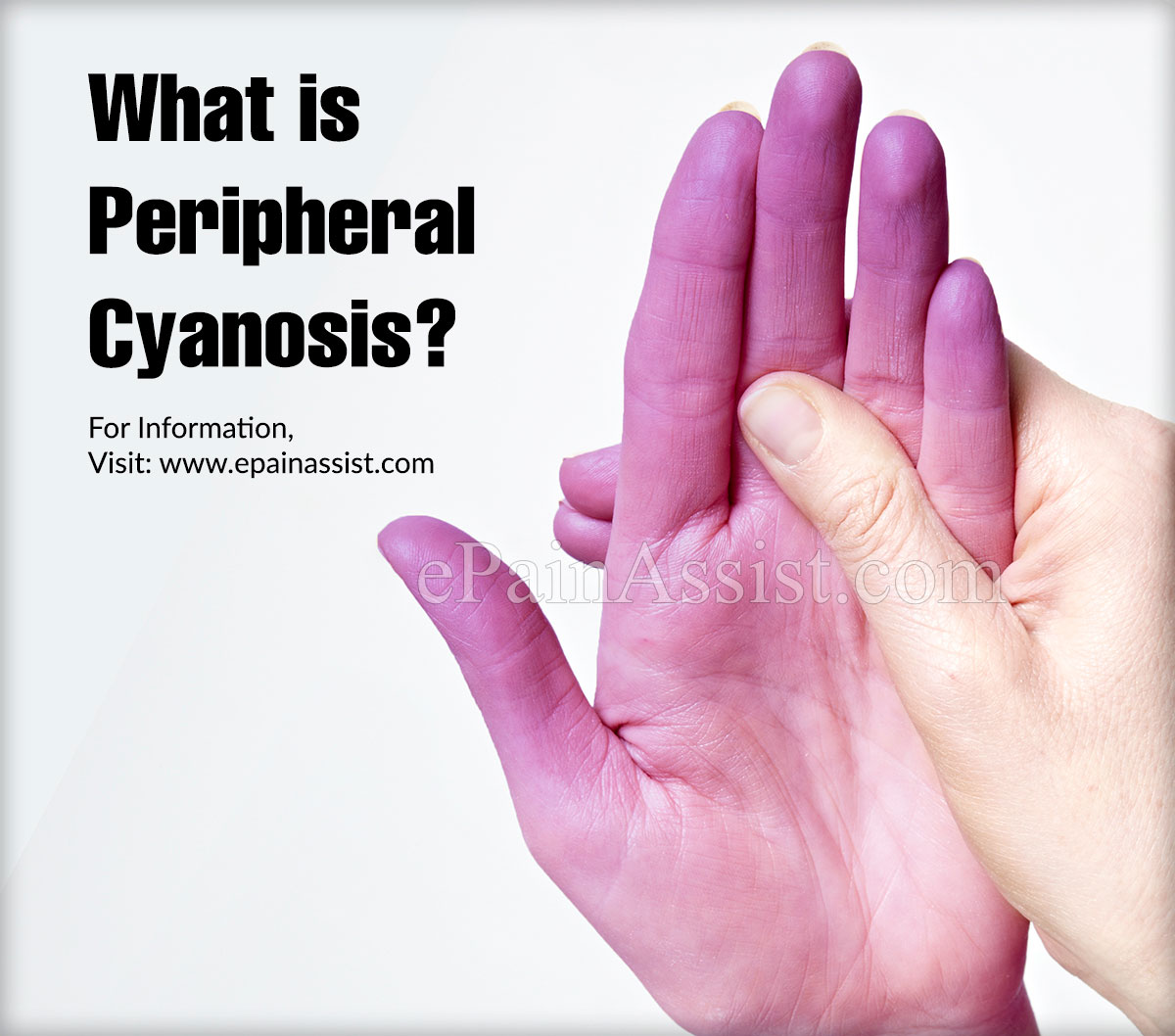What is Peripheral Cyanosis?
Cyanosis refers to a medical condition characterised by bluish discoloration of the skin and the mucous membrane. Peripheral cyanosis is a type of cyanosis where there is bluish discoloration of the extremities, commonly being toes and finger tips. It is generally caused by poor oxygen supply to the affected area, or due to diminished oxygen carrying capacity of the red blood cells. Blood with high oxygen carrying capacity is usually bright red in colour; whereas, blood with poor oxygen carrying capacity tends to be dark red in colour as a result of which it reflects blue colour giving a bluish tint to the skin.
Cyanosis is also associated with exposure to cold temperature, as this leads to narrowing of the blood vessels leading to poor oxygen supply. In such cases, massaging the area or gentle warming helps in reversing the condition by returning normal blood flow to the area. If warmth does not return the condition to normal, it is an indication of presence of other underlying condition. Irrespective of the underlying cause, it is important to know, bluish discoloration is caused due to poor circulation and it is important to restore normal oxygenation to the tissues to avoid any complications.

Symptoms of Peripheral Cyanosis
As mentioned earlier, cyanosis is characterised by bluish discoloration of skin. The most common features of peripheral cyanosis includes vasoconstriction in the peripheral tissues (i.e. extremities) with bluish or purple discoloration of hands, legs, toes or finger tips which feel cold upon touch. The intensity of peripheral cyanosis is at maximum in the nail beds which in most of the cases resolve with gentle massaging and warming the area. In some cases, it may be associated with other symptoms. If any of the following symptoms are present along with cyanosis, it is considered to be a life threatening emergency that needs immediate medical attention:
- Fever
- Headache
- Air hunger/ shortness of breath/ gasping for breath
- Breathing difficulties
- Profuse sweating
- Numbness, pain or generalized discomfort in extremities (hands, arms, legs, fingers, toes)
- Blanching or pallor in the extremities
- Fainting
- Dizziness.
Causes of Peripheral Cyanosis
The most common cause of peripheral cyanosis is being cold. However, it is important to know that it is possible to have peripheral cyanosis even if someone is actually warm. Blue discoloration of skin is a sign of poor oxygenation of the affected area. Normal flow of blood is responsible for carrying oxygenated blood from the lungs to the heart and other tissues through arteries; and carries impure blood from the tissue to the lungs through veins. If there is any disruption in this process leading to inadequate oxygenated blood supply, it causes cyanosis. The common causes of peripheral cyanosis are listed below:
- Excessive tight clothing or accessories
- Venous insufficiency secondary to conditions that retards venous blood flow
- Deep vein thrombosis or DVT
- Lymphedema
- Raynaud’s phenomenon
- Heart failure
- Arterial insufficiency secondary to conditions that retards arterial blood flow
- Reduced blood pressure or severe hypotension
- Septic shock
- Hypovolemia (abnormal or diminished circulation of blood through-out the body).
Diagnosis of Peripheral Cyanosis
Diagnosis of peripheral cyanosis includes obtaining detailed case history followed by physical examination. Examination is carried out to study the heart and lungs. A blood sample may be obtained for checking up blood levels to rule out other conditions. Pulse oximetry test may be carried out to determine the amount of oxygen in the blood. In addition to the above, an arterial blood gas test may be done, which measure the level of acidity, carbon dioxide and oxygen in the blood. In some cases, CT scan and chest x-ray may be useful in evaluating the condition of the heart and lungs.
Treatment and Management of Peripheral Cyanosis
The first step in management of peripheral cyanosis is providing warmth to the hands and feet. If providing warmth does not reverse the condition, serious medical attention is needed. It is important to understand the condition and identify the underlying condition causing peripheral cyanosis. Appropriate measures are taken to restore adequate supply of oxygenated blood to the affected area, based on the underlying cause. Treatment done in a timely manner helps is restoring the condition. Delay in treatment of peripheral cyanosis often leads to serious complication which may even be fatal. There are some medications which are often helpful in relaxing the blood vessels, which in turn increases the blood flow and thus increases the supply of oxygen to the affected tissues. These medications for treating peripheral cyanosis include:
- Anti-hypertensive drugs
- Anti-depressants
Patients suffering from peripheral cyanosis are often advised to avoid certain medications, which are known to restrict blood flow. These include:
- Beta blockers
- Birth control pills
- Migraine medications
- Pseudo ephedrine based cold and allergy medication.
Heart failure associated with peripheral cyanosis will require immediate treatment in hospital as an emergency case. Raynaud’s phenomenon associated with cyanosis requires long term treatment with lifestyle modification. In some cases, the patient is advised to limit intake of caffeine and nicotine products, which are known to constrict blood vessels and affects blood flow.
Also Read:
